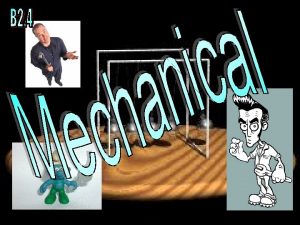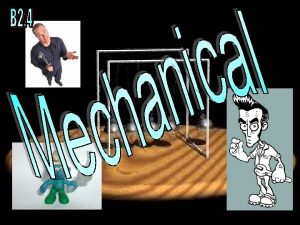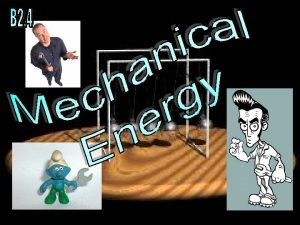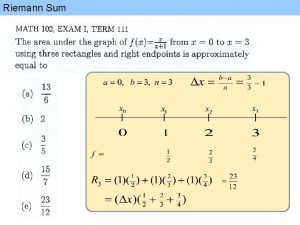The term mechanical energy means the sum of







- Slides: 7


The term mechanical energy means the sum of an object’s potential and kinetic energy. When work is done on an object, the object gains energy as a result. An object is gaining kinetic energy if it increases its speed. An object is gaining gravitational potential energy if it is getting higher above the reference point (the ground).

The law of conservation of mechanical energy is: “Within a closed, isolated system, energy can change form, but the total amount of mechanical energy remains constant. ” A closed, isolated system means that it is isolated from external forces, so no work can be done on it (i. e. energy can’t be added or taken away). It is sometimes referred to as a frictionless system. Friction “dissipates” energy as useless heat. All this really means is that potential energy is being converted to kinetic energy, or vice versa. So, we can say: Watch video: friction You can divide both sides by the mass!!

Practice Problems p. 183 8) A seagull flying horizontally at 8. 00 m/s carries a clam with a mass of 300 g in its beak. Calculate the total mechanical energy of the clam when the seagull is 30. 0 m above the ground. 97. 9 J 9) A 55. 0 kg high-jump athlete leaps into the air in an attempt to clear the bar. At the top of the leap, the athlete has a total mechanical energy of 3. 00 x 103 J and is moving at 8. 33 m/s. Calculate the gravitational potential energy of the athlete. 1. 09 x 103 J 10) A construction worker drops a 2. 00 kg hammer from a roof. When the hammer is 50. 0 m above the ground, it has a total mechanical energy of 1. 88 x 103 J. Calculate the kinetic energy of the hammer. 899 J

Practice Problems p. 184 11) A 10. 0 kg water balloon is dropped from a height of 12. 0 m. Calculate the speed of the balloon just before it hits the ground. 15. 3 m/s 12) A 30. 0 kg child on a trampoline jumps vertically into the air at an initial speed of 1. 60 m/s. Calculate how high the child will rise. 0. 130 m 13) A 20. 0 g dart is fired from a dart gun with a horizontal speed of 4. 10 m/s. The total mechanical energy of the dart is 0. 481 J. Calculate the gravitational potential energy of the dart. 0. 313 J

14) A pendulum consists of a 500 g metal ball suspended on a 50. 0 cm string. The ball is pulled horizontally and up a total vertical distance of 10. 0 cm. It is then released. At the bottom of the arc, the mechanical energy of the ball was determined to be 0. 491 J. What was the speed of the ball at the bottom of its arc? 1. 40 m/s

ü read pages 183 – 188 ü B 2. 4 Check and Reflect page 188 #’s, 5 -9 ü Line master 9 – Mechanical energy and the pendulum













